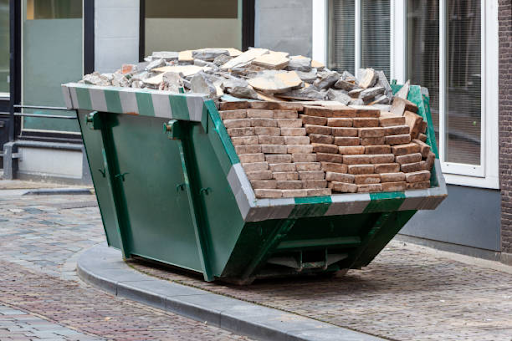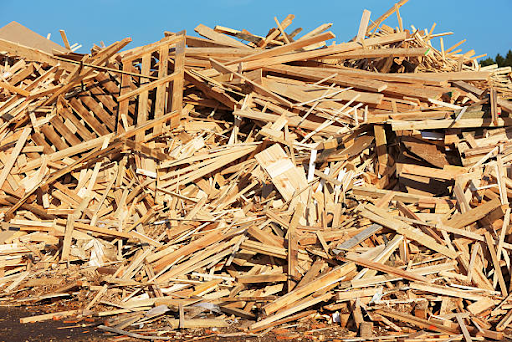The construction industry has been increasingly adopting sustainable practices to minimize its environmental impact and promote resource conservation. One notable approach in this regard is the use of recycled materials in construction projects. By reusing materials that would somehow wind up in landfills, manufacturers can add to a more supportable future while tending to the developing requirement for eco-accommodating development arrangements.
Pros and Cons of Using Recycled Materials in Construction
Pros and Cons of Using Recycled Materials in Construction
The point of this article is to investigate the upsides and downsides of utilizing reused fabricating materials, revealing insight into their likely advantages and disadvantages. Throughout the construction industry, there is a growing interest in finding innovative ways to reduce reliance on virgin resources and minimize waste generation. Utilizing reused materials helps monitor normal assets as well as diminishes energy utilization and ozone-depleting substance outflows related to the extraction and assembling of new materials.
In this article, we will delve into various aspects of using recycled materials in construction. We will examine the environmental benefits, economic advantages, enhanced energy efficiency, and design possibilities associated with incorporating recycled materials. Additionally, we will address considerations such as durability, potential health and safety concerns, availability, sourcing challenges, and regulatory compliance.
By giving a far-reaching outline of the upsides and downsides, this article plans to prepare draftsmen, developers, and partners with the essential data to settle on informed choices in regard to the utilization of reused construction materials. It is essential to understand the potential advantages and limitations of incorporating recycled materials into construction projects, as well as the steps required to ensure their effective integration. By doing so, the construction industry can contribute to a more sustainable and resilient built environment.

Environmental Benefits of Recycled Building Materials
Using recycled building materials brings about significant environmental benefits. One of the key advantages is the reduction of demand for virgin resources. By repurposing materials like wood, steel, and concrete, the construction industry can help conserve natural resources and protect ecosystems. Additionally, recycling materials leads to a decrease in energy consumption and greenhouse gas emissions, contributing to a more sustainable future. The practice also diverts waste from landfills, reducing the burden on these disposal sites. By embracing recycled materials, the construction sector can play a crucial role in promoting resource conservation and mitigating environmental impacts.
Economic Advantages of Using Recycled Materials
The use of recycled materials in construction offers several economic advantages. Firstly, it can lead to cost savings. For instance, opting for reclaimed lumber or salvaged architectural elements can be more budget-friendly compared to purchasing new materials. Moreover, the availability of recycled materials in local markets can reduce transportation costs. Sustainable practices can also enhance a company's brand image, attracting environmentally conscious clients and business opportunities. By incorporating recycled materials, construction companies can not only contribute to a greener environment but also bolster their financial bottom line.
Enhanced Energy Efficiency in Construction
Recycled materials can contribute to enhanced energy efficiency in construction projects. When integrated thoughtfully, these materials can improve thermal performance and reduce energy consumption. For example, using recycled insulation materials can lead to lower heating and cooling needs, resulting in reduced energy bills. As energy-efficient construction gains importance, incorporating recycled materials offers an eco-friendly approach to achieving better energy performance in buildings.
Aesthetics and Design Possibilities
One of the remarkable advantages of using recycled building materials is the wide range of aesthetic and design possibilities they offer. These materials can add character and a unique visual appeal to construction projects. Reclaimed wood, for instance, can create a rustic and charming atmosphere, while salvaged architectural elements can add historical significance. Embracing recycled materials can inspire architects and builders to innovate and create distinct, sustainable designs that captivate the imagination of occupants and visitors alike.
Durability and Strength Considerations
When using recycled materials, it's essential to carefully evaluate their durability and strength. Some recycled materials may demonstrate similar or even superior performance compared to new materials, while others may have limitations. Understanding the structural integrity and long-term viability of recycled materials is crucial to ensure the safety and longevity of the constructed buildings. Proper evaluation and testing procedures must be in place to select the most suitable recycled materials for specific construction purposes.

Potential Health and Safety Concerns
While recycled building materials offer many benefits, they may also pose potential health and safety concerns. Certain recycled materials may contain hazardous substances such as lead, asbestos, or volatile organic compounds (VOCs). It is crucial to conduct thorough testing and adhere to safety regulations to mitigate any potential risks. Implementing proper handling, installation, and maintenance protocols is essential to safeguard the health and well-being of occupants and construction workers.
Availability and Access to Recycled Materials
The availability and access to recycled materials can vary depending on the region and local recycling infrastructure. Some areas may have a robust supply chain for recycled building materials, while others may face limitations in sourcing them. Establishing partnerships with reliable suppliers and exploring recycling initiatives can help ensure a consistent and reliable supply of recycled materials. Proximity to recycling centers and strategic planning can play a vital role in promoting the widespread use of recycled materials in construction.

Challenges in Sourcing Consistent Quality
Maintaining consistent quality in recycled materials can be challenging due to variations in composition, condition, and processing. Builders and architects need to implement robust quality control measures and establish partnerships with trusted suppliers. Thorough inspections, testing, and certification processes can help ensure the suitability and reliability of recycled building materials. Overcoming the challenges of sourcing consistent quality is crucial for successful integration and optimal performance in construction projects.
Regulatory and Code Compliance
Using recycled materials in construction may require compliance with specific regulations and building codes. It is essential to consult with local authorities and construction professionals to ensure adherence to relevant standards. Familiarity with the regulatory landscape and understanding any limitations associated with the use of recycled materials is vital. By adhering to regulations, construction projects can proceed smoothly and meet the necessary requirements while benefiting from the advantages of recycled materials.
Conclusion
In conclusion, the use of recycled materials in construction offers both advantages and challenges. The environmental benefits are significant, including reduced demand for virgin resources, energy conservation, and waste diversion from landfills. Incorporating recycled materials can also bring economic advantages, such as cost savings, enhanced brand image, and access to local markets. Furthermore, these materials can contribute to enhanced energy efficiency in buildings, offer unique design possibilities, and promote a commitment to sustainability.
However, there are considerations that must be taken into account when using recycled materials. Durability and strength vary depending on the specific material, and thorough evaluation is necessary to ensure their suitability for construction purposes. Potential health and safety concerns, such as the presence of hazardous substances, must be addressed through testing and adherence to safety regulations. Additionally, availability, sourcing challenges, and compliance with regulatory requirements are important factors to consider.
By carefully weighing the pros and cons, consulting with experts, and implementing proper quality control measures, the construction industry can effectively leverage the benefits of recycled building materials while mitigating potential drawbacks. Sustainable practices and a comprehensive understanding of the unique characteristics of recycled materials are crucial for successful integration into construction projects.
In conclusion, the use of recycled materials in construction represents a significant step towards a more sustainable and environmentally conscious industry. By embracing these materials, the construction sector can contribute to resource conservation, energy efficiency, and waste reduction. With continued advancements in recycling technology and increased awareness of the benefits, it is expected that the adoption of recycled building materials will continue to grow. Through collaborative efforts, builders, architects, and stakeholders can create a built environment that prioritizes sustainability, resilience, and a greener future.
FAQs (Frequently Asked Questions):
Q1. What are recycled building materials?
A1. Reused fabricating materials will be materials that have been reused or reused from past development projects or different sources as opposed to being disposed of as waste. These materials can include items like reclaimed wood, salvaged architectural elements, recycled metal, and crushed concrete, among others.
Q2. Why should I consider using recycled building materials?
A2. There are several reasons to consider using recycled building materials. Right off the bat, it advances natural manageability by decreasing the interest for new assets and redirecting waste from landfills. Additionally, it can offer economic advantages such as cost savings, as recycled materials are often more affordable than new ones. Using recycled materials also allows for unique design possibilities and demonstrates a commitment to sustainable construction practices.
Q3. Are recycled building materials as durable as new materials?
A3. The durability of recycled building materials can vary depending on the specific material and its condition. While some recycled materials can exhibit comparable or even superior performance to new materials, others may have limitations. It is fundamental to painstakingly assess the underlying trustworthiness and long-haul reasonability of reused materials before use, taking into account factors like quality, handling, and past use.
Q4. Are there any well-being and security concerns related to utilizing reused fabricating materials?
A4. While reused construction materials offer many advantages, it is vital to know about possible well-being and security concerns. A few reused materials might contain dangerous substances like lead, asbestos, or unpredictable natural mixtures (VOCs). Proper testing, handling, and compliance with safety regulations are necessary to mitigate any potential risks. Consulting with professionals and following recommended guidelines can help ensure the safe use of recycled materials.
Q5. Where can I find sources of recycled building materials?
A5. There are various sources of recycled building materials. Local salvage yards, architectural salvage companies, and specialized recycling centers often carry a range of recycled materials. Online marketplaces and classified ads can also provide options for sourcing recycled building materials. Additionally, connecting with construction and demolition projects that generate waste materials can offer opportunities to obtain recycled materials. It is important to establish relationships with reliable suppliers and verify the quality of the materials before making a purchase.
